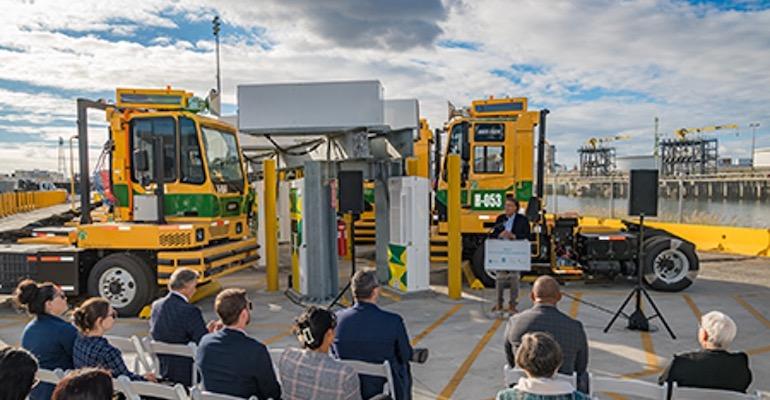The electric vehicles have been rolled out at SSA Terminals LLC, a joint venture between SSA Marine and Matson Navigation Company.
The terminal tractors were partially funded by a $50 million grant from the California Air Resources Board for the Sustainable Terminals Accelerating Regional Transformation, or START project.
The new machines increase the percentage of zero-emissions equipment being used at the Port of Long Beach to approximately 20%. The percentage will continue to increase as more zero-emissions equipment is rolled out at the Port.
“Meeting our aggressive zero-emissions goals is not possible without the support of our partners, and this project is just another example of the shared commitment at the Port of Long Beach to a zero-emissions future,” said Port of Long Beach CEO Mario Cordero.
“I’d especially like to thank SSA Terminals for leading zero-emissions efforts at Pier C, Southern California Edison for prioritizing zero-emissions infrastructure projects and CARB for the funding to make these types of projects possible.”
“We are excited to see the Port of Long Beach moving in this direction, consistent with Matson’s goals of achieving a 40% reduction in Scope 1 greenhouse gas fleet emissions by 2030 and net zero GHG emissions by 2050,” said Matson Chairman and CEO Matt Cox.
To turn idea into reality, SSA Terminals closely collaborated with the equipment developers to create machinery and infrastructure that could withstand the intensity of a full workday on the docks. The equipment can run a two-shift operation with a once-per-day charging.
Copyright © 2024. All rights reserved. Seatrade, a trading name of Informa Markets (UK) Limited.
Add Seatrade Maritime News to your Google News feed.  |

